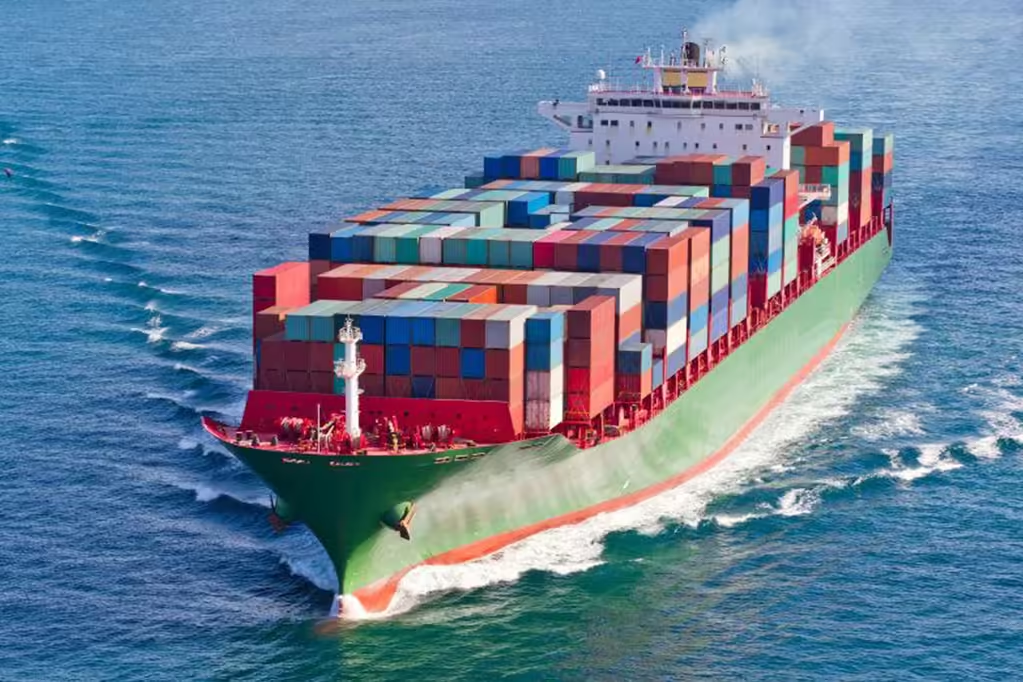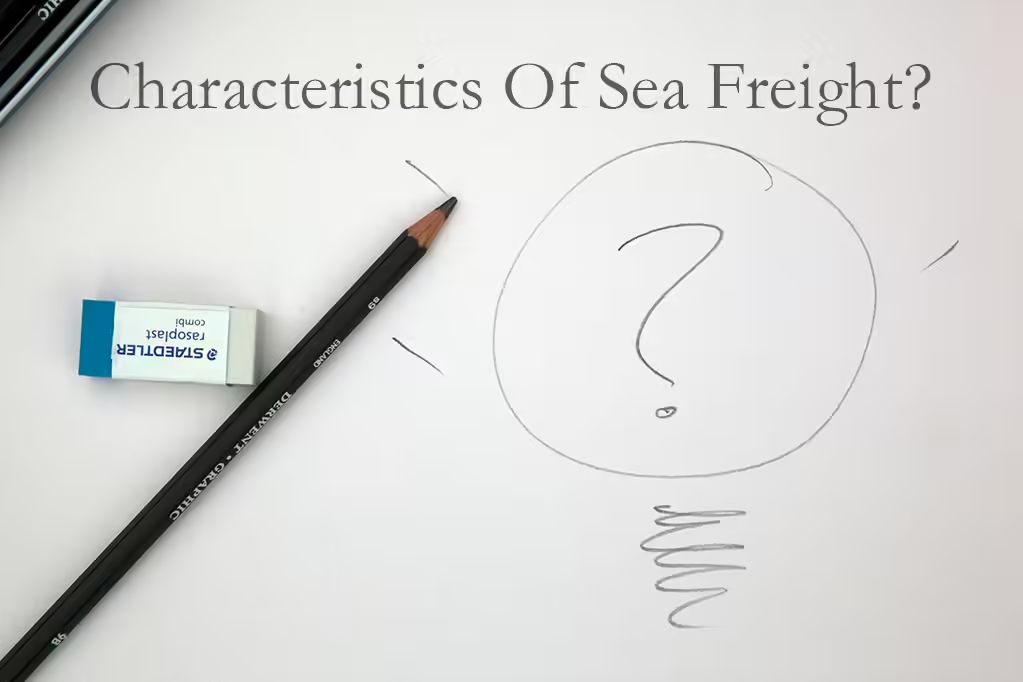Sea Transport: 6 Characteristics You Should Know About
Sea transport,it can be called Marine transportation, sea freight,or ocean transport, is one of the most cost-effective and reliable methods for moving goods across continents. It accounts for over 90% of global trade volume, making it a crucial component of international commerce. Understanding the characteristics of sea freight can help businesses make informed decisions about their logistics strategies. Here are 6 key features you should be aware of:
Economical Long-Distance Transport in Sea Transport
One of the primary advantages of sea transport is its remarkable cost-effectiveness, especially for long-distance shipments. The sheer volume of goods that can be transported by a single vessel allows for significant economies of scale, reducing the cost per unit considerably compared to air or road transport. This makes sea freight an ideal choice for bulk commodities such as raw materials, machinery, and consumer goods.

Economies of Scale
Cargo ships, particularly container vessels, can carry thousands of twenty-foot equivalent units (TEUs). This high capacity means that the fixed costs associated with operating a vessel, such as crew salaries, fuel, and maintenance, are spread out over a much larger number of units. As a result, the cost per unit is significantly reduced, making sea freight a highly competitive option for bulk shipments.
Bulk Commodities
The cost savings achieved through sea transport are particularly beneficial for bulk commodities. Raw materials, such as iron ore, coal, and agricultural products, as well as machinery and consumer goods, are often shipped in large quantities. These goods do not require the speed or urgency that other modes of transportation offer. Consequently, the cost savings achieved through sea freight can significantly impact the profitability of businesses dealing in these commodities.
Long-Distance Trade
For long-distance trade, the cost advantage of sea transport becomes even more pronounced. The distance over which goods are transported does not significantly affect the cost per unit, unlike air or road transport, where longer distances mean higher costs. This makes sea freight the preferred method for transoceanic trade, connecting distant markets and facilitating global commerce.
the cost-effectiveness of sea freight is a critical factor in its widespread adoption across various industries. Economies of scale, suitability for bulk commodities, and its efficiency in long-distance trade combine to create a compelling value proposition for businesses looking to move goods internationally.
Capacity and Volume in Sea Freight
Cargo ships are renowned for their ability to carry vast amounts of cargo, making them ideal for transporting large volumes of goods. This capability is one of the key reasons why sea freight is a preferred mode of transportation for bulk commodities and large shipments.

Container Ships
Container ships, specifically designed to carry standardized cargo containers, can handle thousands of twenty-foot equivalent units (TEUs). These vessels are equipped with sophisticated loading and unloading systems that allow for efficient handling of containers. The sheer capacity of container ships ensures that even the largest orders can be shipped in a single voyage, reducing the need for multiple trips and minimizing logistics costs.
Bulk Carriers
Bulk carriers are specialized vessels designed to carry dry bulk cargoes such as coal, grain, and ore in huge quantities. These ships are typically larger and have specialized features that allow for the safe and efficient transportation of bulk commodities. Their cargo holds are designed to accommodate the unique properties of bulk cargoes, ensuring that they are transported securely and without damage.
Efficiency in Large Orders
The capacity of cargo ships ensures that even very large orders can be shipped efficiently and without the need for multiple trips. This not only simplifies logistics but also reduces the overall cost of transportation. For example, a single bulk carrier can transport enough coal to power a large industrial facility for months, or a container ship can deliver a full season’s worth of consumer goods to retailers.
the vast capacity and volume capabilities of cargo ships, including container ships and bulk carriers, enable the efficient and cost-effective transportation of large shipments.
Global Network and Accessibility in Sea Transport
Sea Transport operates through a well-established global network of ports and shipping routes that connect virtually every country in the world, enabling the seamless movement of goods between continents. This vast network is a cornerstone of international trade and commerce.

Ports as Major Hubs
Ports serve as major hubs where cargo is loaded and unloaded. Strategically located along coastlines and rivers, these ports are equipped with state-of-the-art facilities, including cranes, storage areas, and handling equipment. They act as distribution centers, sorting and transferring goods to their final destinations via road, rail, or other means of transportation.
Shipping Routes
The global network of shipping routes is a complex web that links ports around the world. These routes are carefully planned to optimize transit times and reduce costs. Some of the most important shipping routes include the Suez Canal, Panama Canal, Strait of Malacca, and the Strait of Hormuz. These maritime corridors are essential for international trade, ensuring that goods can travel between continents with minimal delays.
Modern Logistics Systems
Modern logistics systems have transformed the way goods are handled and tracked during sea transit. Advanced technologies, such as GPS tracking, real-time communication systems, and automated cargo handling, enable precise monitoring of shipments throughout their journey. These systems help in predicting arrival times, managing inventory, and ensuring that goods reach their final destination on schedule. Moreover, digital platforms and software solutions facilitate the exchange of information between shippers, carriers, and customs authorities, streamlining the entire logistics process.
the global network of ports and shipping routes, supported by modern logistics systems, ensures that sea freight can operate efficiently and reliably.
Reliability and Predictability in Sea Freight
Despite potential disruptions such as adverse weather conditions or port congestion, sea freight remains a remarkably reliable mode of transportation. Shipping companies typically adhere to regular schedules, and vessels follow established routes, ensuring predictability in transit times. Modern technology, including GPS tracking and real-time communication, plays a vital role in monitoring the progress of shipments and mitigating potential issues.

Regular Schedules
Shipping companies maintain regular schedules, which are published and updated regularly. These schedules allow for planning and coordination between exporters, importers, and logistics providers. Vessels follow established routes, which are optimized for efficiency and safety, ensuring that goods reach their destinations within predictable time frames.
Technology and Tracking
Modern technology, such as GPS tracking and real-time communication systems, has revolutionized the monitoring of sea freight shipments. GPS tracking enables precise location tracking of vessels, providing shippers and receivers with up-to-date information on the status of their cargo. Real-time communication systems allow for immediate updates and coordination in case of unexpected events, such as severe weather or port delays.
Mitigating Disruptions
Despite the inherent reliability of sea transport, disruptions can occur. Weather conditions, such as storms or hurricanes, can delay voyages, while port congestion can lead to extended waiting times. However, shipping companies and logistics providers are equipped to handle these situations. They can reroute vessels, adjust schedules, or find alternative ports if necessary, ensuring that the impact on transit times is minimized.
the reliability and predictability of sea transport are bolstered by regular schedules, established routes, and advanced technology. These factors work together to mitigate potential disruptions, ensuring that goods are delivered with minimal delays, even in challenging circumstances.
Environmental Impact in Sea Transport
Compared to other forms of transportation, sea transport generally has a lower carbon footprint per ton-mile. However, the industry is continuously working to reduce its environmental impact further by adopting cleaner fuels and technologies. Initiatives aimed at reducing greenhouse gas emissions, such as the use of liquefied natural gas (LNG) and improvements in ship design efficiency, are becoming increasingly prevalent.

Lower Carbon Footprint
Sea Transport is known for its lower carbon footprint compared to air or road transport. This is largely due to the efficiency of marine engines and the capacity of vessels to carry large volumes of cargo, which results in a lower emission rate per unit of cargo transported. The sheer size of container ships and bulk carriers enables them to transport thousands of tons of goods, spreading the environmental impact over a larger volume of cargo.
Cleaner Fuels
To further reduce emissions, the maritime industry is exploring the use of cleaner fuels. Liquefied natural gas (LNG) is one such alternative that emits fewer pollutants compared to traditional marine diesel. LNG-powered ships produce lower levels of sulfur oxides, nitrogen oxides, and particulate matter, contributing to cleaner air and water. Additionally, biofuels and synthetic fuels are being tested as viable options to reduce greenhouse gas emissions even further.
Improvements in Ship Design
Advancements in ship design are also playing a significant role in improving efficiency and reducing emissions. Newer vessels are designed with improved hull shapes and propulsion systems that enhance hydrodynamic performance and reduce drag. These design improvements allow ships to travel at optimal speeds while consuming less fuel, thereby lowering their carbon footprint.
Regulatory Compliance
International regulations, such as those set by the International Maritime Organization (IMO), are driving the industry towards more sustainable practices. The IMO has implemented measures to limit sulfur content in marine fuels and has set targets for reducing greenhouse gas emissions from shipping. These regulations encourage the adoption of cleaner technologies and fuels, promoting a more environmentally friendly approach to maritime transport.
while sea transport already offers a more sustainable option compared to other forms of transportation, ongoing efforts to adopt cleaner fuels and improve ship design efficiency are helping to further reduce its environmental impact. These initiatives are crucial in addressing the challenges posed by climate change and ensuring that the maritime industry remains a responsible contributor to global trade.
Documentation and Regulations in Sea Freight
Shipping goods via sea involves a variety of documentation and regulatory requirements that are essential for ensuring smooth and legal transit. These include customs declarations, bills of lading, and compliance with international trade laws. Businesses must ensure that all necessary paperwork is accurate and complete to avoid delays or penalties. Working with experienced freight forwarders can streamline this process and minimize potential issues.

Customs Declarations
Customs declarations are required for all international shipments. These documents provide details about the goods being shipped, including their description, quantity, value, and country of origin. Accurate customs declarations are crucial for determining duties and taxes and ensuring that goods comply with import/export regulations.
Bills of Lading
A bill of lading is a legal document issued by the carrier to the shipper. It serves as a contract of carriage, detailing the terms of shipment, including the type of goods, the quantity, and the destinations. Bills of lading also function as receipts for the goods upon delivery and as documents of title, allowing the transfer of ownership of the goods.
Compliance with International Trade Laws
International trade laws vary widely between countries, and businesses must comply with these regulations to avoid legal issues. This includes adhering to import/export restrictions, obtaining necessary permits and licenses, and complying with specific documentation requirements for certain goods. Non-compliance can result in fines, delays, or even seizure of goods.
Experienced freight forwarders specialize in managing the logistics of international shipments, including handling all the necessary documentation. They have the expertise to navigate complex regulations and ensure that all paperwork is completed accurately and submitted on time. Freight forwarders can also provide valuable advice on customs procedures and help businesses avoid potential pitfalls, making the shipping process smoother and more efficient.
the documentation and regulatory requirements involved in sea freight are critical components of the shipping process. Ensuring compliance and accuracy in these documents is essential for avoiding delays and penalties. Partnering with knowledgeable freight forwarders can significantly simplify the process and ensure that shipments proceed without issues.
Sea freight offers numerous benefits for businesses looking to move goods internationally. Its economic viability, vast capacity, global reach, reliability, relatively low environmental impact, and the support of robust regulatory frameworks make it a cornerstone of global trade. By understanding these characteristics, businesses can optimize their supply chains and leverage sea freight effectively to meet their logistical needs.

